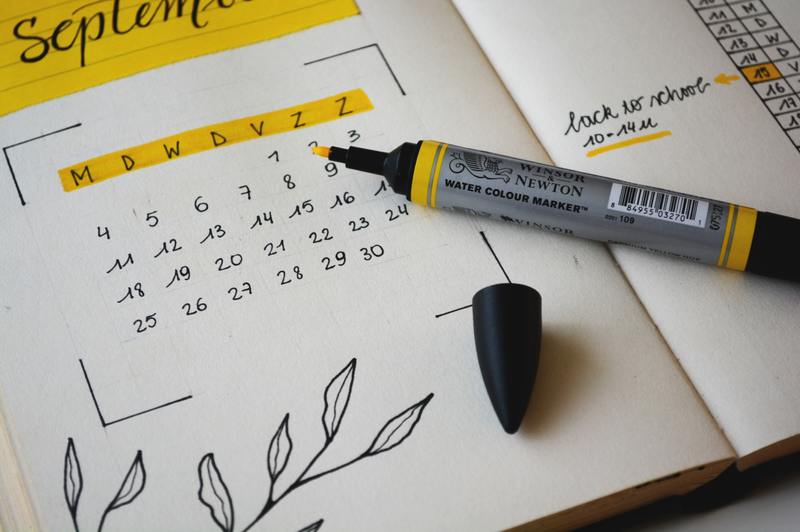Before you can learn how to develop an integrated pest management plan, you must first understand what integrated pest management is. The steps outlined below will guide you in building an effective IPM strategy for combating pests through a strategic-based operation.
When it comes to executing actions in accordance with your objectives, planning should always come first.

Integrated Pest Management (IPM) Process Flow
Step #1. Inspect the existence of the problem through a pest triangle
The pest triangle has three corners: a host, a pest, and its surrounding. A pest problem will only arise if all three of these elements are present.
Some actions may be rendered ineffective because of mistaken identity. Over-watering may be mistaken for a fungal infection, resulting in the use of a spray that kills the plant.
To implement the right course of action, identify the damage and the pest behind it.
Step #2. Keep an eye out for pest population: monitoring and precautions
If we want preventative measures to be effective, they must be implemented at the appropriate time. Once the pest has been correctly identified, you should begin monitoring it immediately before it becomes a problem.
Traps can be placed in areas where pests are observed to occupy — checking on a regular basis to ensure that you are aware of existing issues and can take action before things spiral out of control. Pest populations can be monitored for various reasons, including their distribution and if there is a decrease or increase in its quantity.
Step #3. Define a trigger point for action (health, economic, or aesthetic)
When a certain number of pests are present, a pest-specific treatment action must be initiated. Criteria for determining when to take action include health issues associated with pests, financial losses due to pest damage, and aesthetic damage to plants or buildings.
A trigger point is a state at which the pest is no longer tolerated. Priority should be given to public health threats over other considerations.
Step #4. Select the best strategy and tactics
The field of structural pest control is continually changing. For more in-depth information, see the references provided below.
This information is meant to give a quick overview of current pest management practices.
- Culture management
Sanitation, recycling, waste disposal, product inspection, storage, cleaning schedules, maintenance, and pest sighting recording are all included in cultural pest management. An effective form of insurance is a written policy outlining specific procedures and identifying who is responsible for what.
- Physical management
It is the goal of IPM to keep pests from establishing themselves in a given area. After the inspection, an appropriate physical control is selected based on the site’s unique characteristics.
- Biological management
Pest populations can be controlled biologically by utilizing predators, parasitoids, and pathogens. Until the advent of chemical pesticides, it was the mainstay of pest control.
- Chemical management
Because of the potential for pollution, off-target effects, and pest resistance, chemical pesticides have been used to combat structural pests since the 1950s. Integrated Pest Management reduces chemical pesticides usage, but it acknowledges that some pests will always be resistant to control without them.
You must also check this article to avoid improper pest management strategies.
Step #5. Assessment of the results
The continued success of any treatment depends on a thorough evaluation. Make sure to keep a watchful eye for pests while keeping track of cleaning and maintenance needs.
Tools for keeping track of information are numerous. To get the most out of them, you need to use them, organize them, predict future infestations, and decide on treatment options.
Keep These Pointers In Mind
- Recognize how the environmental conditions and cultural practices in your niche environment affect the pest you are trying to control, whether it is a disease, an insect, or a weed.
- Cultural practices include mowing, fertilization, irrigation, cultivation, and inter/overseeding. See how we can prevent pests in organic farming.
- Although pesticides are frequently applied, pests will inevitably persist when improper environmental conditions or cultural practices are not corrected.
- Pest prevention is an essential part of an effective IPM strategy. Cultural practices, regular scouting, and the use of action thresholds are all examples of preventive interventions.
- Learning about a pest’s biology and life cycle can help determine how and when to treat it. Ineffective actions can be costly.
- To protect crops, integrated pest management (IPM) is socially acceptable, environmentally responsible, and economically feasible.
- The use of fewer pesticides and lower costs are two advantages of implementing Integrated Pest Management (IPM).
Conclusion
The components involved in how to develop an integrated pest management plan can be broken down into five significant steps. The first step is to discover the pest damage and its source; the second step is to monitor and take preventative measures to keep pests from congregating; the third step is to establish an action threshold.
The fourth step is choosing the most practical combination of management strategies and tools — finally, evaluating the overall outcome. This integrated pest management approach will help you understand the current situation, any unintended consequences, and the best strategy for moving forward.

I read the article about mold mites, I have a very bad infestation the mites are everywhere, even on the popcorn ceiling, my landlord doesn’t believe me and won’t get rid of them, how do I prove that I have mite’s everywhere in my house, it’s been 6 month now, I also have biting mite’s please help me